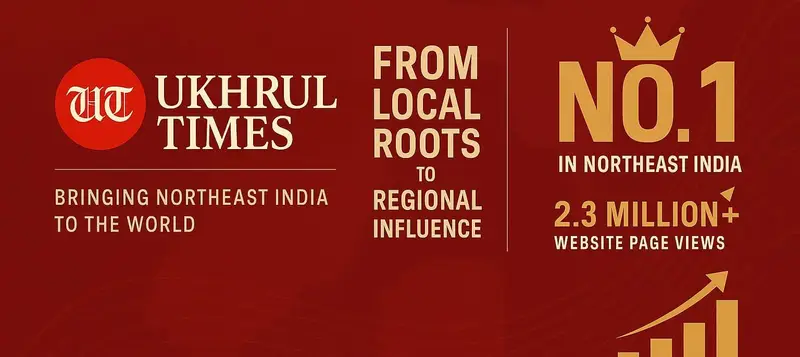Now Reading: Nehruvian approach to the Nagas and Northeast India
-
01
Nehruvian approach to the Nagas and Northeast India
Nehruvian approach to the Nagas and Northeast India

THE UBIQUITOUS Indo-Naga peace talks speculation for a September solution perhaps can take a breather now. While the ‘Indo-Naga peace talks’ continue in New Delhi, a little dive back into history seems appropriate to perhaps point out the metastasized lump of the idea of cancer to the unending negotiations dating back to the 1997 ceasefire agreement, and further to when it all began. When the Indian parliament in 1958 enacted the Armed Forces Special Powers Act (AFSPA) at a time Jawaharlal Nehru was at the helm of his Prime Ministership, India, as we recall, was in an age of transition.
In one of Nehru’s rare television interviews with Arnold Michaelis in 1958, around the same year AFSPA was enacted, Nehru, thoroughly anglicized, disquietly uttered, “men’s material advance, his conquest over the power of nature has far outrun his conquest over himself.” Six years later, Nehru returned for an interview again in 1964, a relatively older and weary Nehru after the Sino-Indian War over the disputed Himalayan border, which unfortunately was the year he died.
The marshalling of AFSPA to Arunachal Pradesh, Assam, Manipur, Meghalaya, Mizoram, Nagaland, and Tripura had its terrible consequences. But for the Naga tribes, the Indian force’s onslaught, hostility, and ferocity was the doing of a brute aggressor, but first with coercive powers and measures. Nehru then was already aware of the technological advancements and how the world was rapidly changing. Independent countries’ approach to foreign policy, international affairs, national interest, democracy, federalism, and his understanding and approach to a new world order, world economy, perhaps made him see the Northeast frontier in a different light.
He said rather candidly in the interview with Arnold Michaelis that “in western Europe and America, the economic revolution preceded the political one and thereby resources were created to satisfy political demands…” He went on to say, “there was no choice for India but to work with what India had.”
Also read: ThePrint de-clutters Nagaland Political Issue, misses the mark on Naga Political Issue
While keeping in mind Nehru’s geopolitical calculation with the Indian economy at the heart of it, Nehru must have understood how the Northeast frontier would pay rich economic dividends through India’s Southeast Asia economy gateway, unseemingly in consonance with Modi’s new India.
BJP’s Look East policy no longer a slogan but an Act under Modi’s Central government’s Act East policy (AEP), where Modi’s last visit to Bangkok not just explored possibilities but had plans already in the cards for Thailand and Myanmar connectivity via the Northeast. Therefore, it will be a hard bargain for India not to consider what Nehru perhaps foresaw: the economy dividends for the rest of India.
Hence, to see that plan in the cards come to fruition, Indo-Naga peace talks, to Indian economists and politicians, perhaps seems like the Achilles’ heel, even so with Nehru’s new India world economy order imagining. This is why a sovereign Naga nation or an integration of all Naga (homeland) areas to be placed under a single administrative unit with its own economy, flag, constitution, and perhaps military could only halt the long-envisaged dream to boost the Indian economy. Whether or not the Nehruvian middle path politics has any resonance with the BJP right-wing politics, at the crucifix of India’s worst economy contraction at -23% for the first two quarters of 2020, this seems like a good deal.
It is unlikely that India will concede to the Nagas’ demand, scattered in Assam, Arunachal, Nagaland, and Manipur at any cost. Any attempt to bring to fruition Modi’s Act East policy will have to traverse through these states. Given today’s GoI policy trajectory, the Nagas’ long cherished demand for a political settlement will have essentially no breakthrough, it appears; neither a diplomatic arrangement in the lines of a Schengen visa model will have any takers.
In “Chanakya,” published in Modern Review, Calcutta, where Nehru describes himself as “some triumphant Caesar passing by,” who might turn dictator with “a little twist…” — Nehru stressed the importance of questioning the motives of leaders, and checking the power they hold.
Well, that self-examination and reforms for the so-called Northeast frontier, and especially for the Nagas, the consequences of conflict between the Indian military and Naga insurgency began when Nehru turned a dictator as he sent hundreds of army to the Northeast sowing seed of insurgency and thus began the cycle of unfriendliness, regional conflict with unimaginable cycles of repercussions for several decades to come.
While to mainland India, Nehru reached out to the peasant and the worker, to the zamindar and the capitalist, to the merchant and the peddler, to the Brahmin in civilian clothes with the language and slogans of democracy and socialism, but on the contrary, to the Nagas, he became what he feared he would become, with, of course, “a little twist”.
Mahatma Gandhi and Jawaharlal Nehru had different ideas about the Nagas as a people and as a nation. Had Mahatma Gandhi had more time, things would have perhaps rather turned out differently for the Nagas in Northeast India. Going back in time to change the past, unfortunately is forbidden.
Must read | Ngahui (Awangkasom) Village massacre in 1918: Less than a dozen survived
















